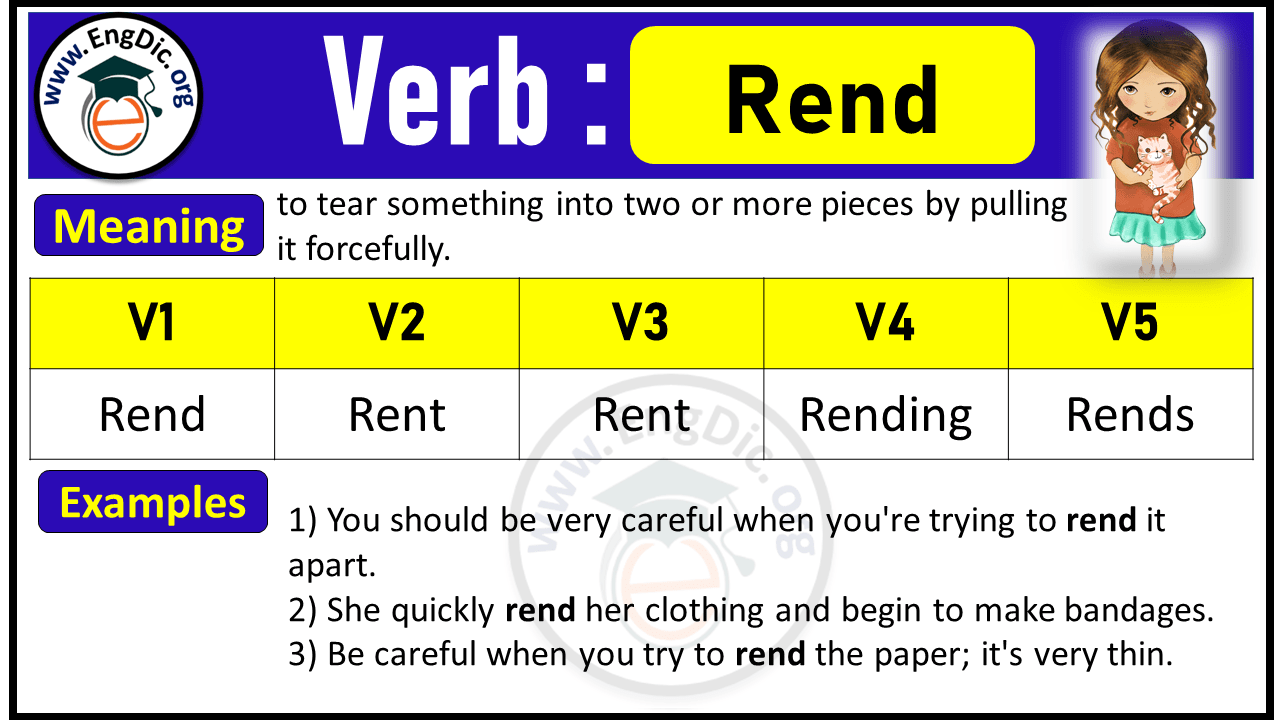Rend Past And Past Participle Form V1 V2 V3 V4 V5 Form of Rend
Have you ever stumbled upon the verb “rend” and wondered about its various forms? Understanding the different forms of a verb can significantly enhance your English skills, making your writing and speaking more precise and engaging.
We will unravel the past and past participle forms of “rend,” including its V1, V2, V3, V4, and V5 forms. By the end, you’ll have a clear grasp of how to use “rend” in different contexts, ensuring your communication is as sharp as possible.
Stay with us, and you’ll discover not just a grammatical lesson, but a pathway to more confident expression. Don’t miss out on this opportunity to elevate your language proficiency!

Credit: www.pinterest.com
Rend Verb Forms
The verb “rend” means to tear or split something. It has different forms. The present form is rend. The past form is rent. The past participle is also rent. For the present participle, use rending. The third person singular form is rends. These forms help in different tenses. Knowing them makes writing easier.
| Base Form (V1) | Past Simple (V2) | Past Participle (V3) | Present Participle (V4) | 3rd Person Singular (V5) |
|---|---|---|---|---|
| rend | rent | rent | rending | rends |
Past Forms Of Rend
The word rendis a verb. It means to tear or split apart. In English, verbs have different forms. These forms change with time. The past form of rend is rent. The past participle is also rent. These forms help in making sentences about the past.
Here is a simple table:
| Form | Example |
|---|---|
| V1 | Rend |
| V2 | Rent |
| V3 | Rent |
| V4 | Rending |
| V5 | Rends |
Knowing these forms helps in writing correctly. Practice makes it easier.
Usage In Sentences
The word rendmeans to tear or split something. In its base form, rendis used to describe an action. For example, “He will rend the cloth.” In past tense, it becomes rent. An example is “She rentthe paper yesterday.” The past participle is also rent. You can say “The paper was rentby him.”
As a continuous action, use rending. “They are rendingthe old posters.” The future form is will rend. “Tomorrow, he will rendthe fabric.” These forms help show different times and actions.

Credit: englishstudyhere.com

Credit: engdic.org
Conclusion
Understanding the verb “rend” and its forms is crucial. It helps in communicating effectively. “Rend” changes to “rent” and “rent” for past and past participle. This knowledge strengthens your grammar skills. Remember, practice makes perfect. Use these forms in sentences.
Enhance your language with correct verb usage. Consistent practice leads to improvement. So, keep learning and applying. Your grasp on English will grow. It’s a step-by-step journey. Enjoy the process and stay curious.






